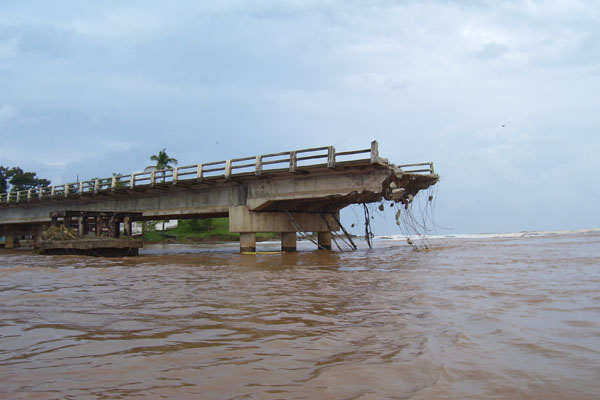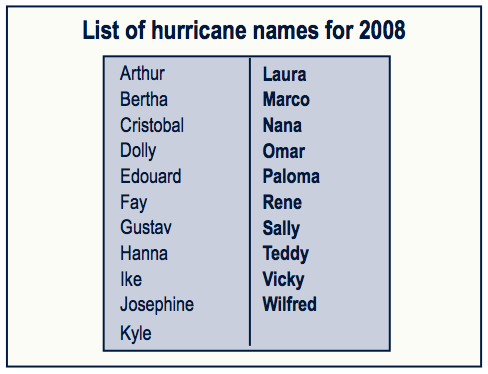On June 1, the Hurricane Season in the Atlantic, Caribbean and Gulf of Mexico officially began

Every year, the hurricane season in the Atlantic begins on June 1 and ends on November 30.
Based on the forecasts of Professor William Gray, of the University of Colorado—whose predictions have had high levels of accuracy—2008 will see more hurricanes than usual; 15 tropical storms and 8 hurricanes are predicted, 2 of which (cyclones) could enter the Caribbean Basin.
Summary of the 2007 Season in the Atlantic Basin
The 2007 hurricane season in the Atlantic Basin—which includes the Atlantic Ocean, the Gulf of Mexico, and the Caribbean Sea— was more active than usual. There were 14 tropical cyclones—of which, 8 were tropical storms and 6 were hurricanes. Two of them were particularly intense, reaching a category five (the highest level on the Saffir-Simpson scale). In terms of the intensity and duration of the storm activity, however, it was a less intense year than others, since several of the tropical cyclones were of low intensity and duration, including Barry, Chantal, Humberto, Ingrid, Lorenzo, and Melissa.

The most notable information of the season was that not since 1851 had two intense hurricanes hit the mainland, as Hurricane Dean did in northern Central America and Felix in Central America in 2007. This supports the idea that hurricane paths tend to go over Central America when the “La Niña” phenomenon is present, which has also been active since May of this year. Hurricanes Dean, Felix, and Noel, and Tropical Storm Erin were the most destructive of the 2007 season, but Noel caused the greatest loss of human life, particularly in Haiti and the Dominican Republic.
THE 2007 HURRICANE SEASON (Atlantic Basin)

The 2007 hurricane season (June 1-November 30): Eight storms and six hurricanes
For further information, please contact:
The National Institute of Meteorology
San José, Costa Rica
imn@imn.ac.cr
www.imn.ac.cr |